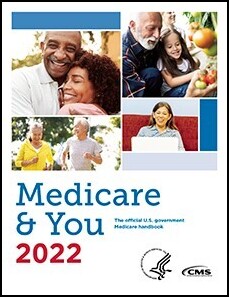Throughout the year, Medicare enrollees receive a number of important notices. You can help your clients by alerting them to notices that will be coming soon. You can also help them understand what these notices mean and how they should respond. Here’s a look at some of the CMS notices to watch for.
For quick reference, click below:
1. Auto-Enrollment Notice
- What is it? This yellow notice tells people that they automatically qualify for Extra Help and that they are being enrolled in a drug plan.
- Who gets it? People who are in Original Medicare and automatically qualify for Extra Help because they also qualify for Medicaid.
- When does it arrive? Any time.
- What should beneficiaries do with it? People who receive this notice will be enrolled in a drug plan automatically unless they decline coverage or join a plan on their own.
2. Change in Extra Help Copayment Notice
- What is it? This orange notice provides information on copayment changes for the following year.
- Who gets it? People who still qualify for Extra Help but who will have a different copayment in the following year receive this notice.
- When does it arrive? October.
- What should beneficiaries do with it? Recipients should keep the notice in case they have questions about their costs.
3. CMS Non-Renewal Action Notice
- What is it? This notice reminds enrollees that they need to join a new Medicare drug plan because their plan left the Medicare program.
- Who gets it? Medicare enrollees whose drug plan has left the Medicare program.
- When does it arrive? January.
- What should beneficiaries do with it? Enrollees who receive this notice should enroll in a new plan to continue receiving prescription drug coverage.
4. CMS Non-Renewal Reminder Notice
- What is it? This notice lets enrollees know that their plan is exiting Medicare in the following year.
- Who gets it? People who do not receive Extra Help and whose plan is leaving Medicare.
- When does it arrive? November.
- What should beneficiaries do with it? Recipients should select a new plan before AEP ends.
5. Deemed Status Notice
- What is it? This purple notice informs people that they automatically qualify for Extra Help.
- Who gets it? People who automatically qualify for Extra Help because they are in Medicare and Medicaid, they’re in a Medicare Savings Program, or they get Supplemental Security Income benefits.
- When does it arrive? Any time.
- What should beneficiaries do with it? The recipient must be enrolled in a Medicare drug plan to receive Extra Help. If the recipient is not enrolled in a plan, they should select a plan and enroll in order to receive Extra Help.
6. Facilitated Enrollment Notice
- What is it? This green notice lets people know they qualify for Extra Help and that they are being enrolled in a drug plan.
- Who gets it? People who qualify for Extra Help and are being automatically enrolled in a drug plan.
- When does it arrive? Any time.
- What should beneficiaries do with it? People who receive this notice will be enrolled in a drug plan automatically unless they decline coverage or join a plan on their own.
7. FBDE RDS Notice
- What is it? The notice lets the recipient know that they qualify for Extra Help but will not be automatically enrolled in a plan because they have other credible coverage.
- Who gets it? People who have Medicare and are eligible for Medicaid and have credible prescription drug coverage from an employer or union that is claiming them for the Retiree Drug Subsidy.
- When does it arrive? Any time.
- What should beneficiaries do with it? If recipients are happy with their coverage, no action is needed.
8. LIS Choosers Notice
- What is it? This tan notice tells people receiving Extra Help about premium changes.
- Who gets it? People who receive Extra Help and whose prescription drug plan premiums are changing.
- When does it arrive? Early November.
- What should beneficiaries do with it? If recipients are unhappy with the new premium amount, they should select a new plan before AEP ends.
9. Loss of Deemed Status Notice
- What is it? This gray notice informs people that they are no longer eligible for Extra Help.
- Who gets it? People who used to get Extra Help but are no longer eligible.
- When does it arrive? September.
- What should beneficiaries do with it? If recipients think they may still qualify for Extra Help, they can apply through the Social Security Administration.
10. Medicare & You Handbook
- What is it? This handbook contains tons of important Medicare information.

- Who gets it? Medicare enrollees who have not opted to go paperless should receive the physical handbook.
- When does it arrive? September.
- What should beneficiaries do with it? Recipients should review the handbook for new information and keep it on hand as a reference. Medicare enrollees can get copies in other formats or request to go paperless at through the Medicare website.
11. Notice of Creditable Coverage
- What is it? Group health plans send this notice to state whether the coverage is considered creditable for Medicare purposes.
- Who gets it? Individuals who have group health coverage through an employer or union.
- When does it arrive? October.
- What should beneficiaries do with it? Recipients should keep the notice in case they need it when they apply for Medicare coverage later.
12. Plan Annual Notice of Change & Evidence of Coverage
- What is it? This notice contains important information about plan changes in coverage and costs that will go into effect on January 1.
- Who gets it? Everyone who is enrolled in a Medicare plan.
- When does it arrive? September.
- What should beneficiaries do with it? This information can help enrollees decide whether they want to keep their plan or switch to a new plan during AEP.
13. Plan LIS Rider
- What is it? Plans send this letter to provide information about costs in the Extra Help program.
- Who gets it? Individuals who qualify for Extra Help.
- When does it arrive? September.
- What should beneficiaries do with it? Recipients should keep it in case they have any questions about costs.
14. Plan Non-Renewal Notice
- What is it? Plans send out this notice to inform enrollees that the plan is exiting Medicare in the following year.
- Who gets it? People enrolled in plans that are leaving Medicare.
- When does it arrive? October.
- What should beneficiaries do with it? Enrollees who receive this notice should use AEP to look for a new plan for the next year.
15. Qualifying Health Coverage Notice
- What is it? The IRS sends this notice with Form 1095-B to state that Medicare Part A counts as qualifying health coverage under the ACA.
- Who gets it? Only some Medicare enrollees receive this notice.
- When does it arrive? Early in the year.
- What should beneficiaries do with it? Recipients should file this notice with their tax information.
16. Reassign Formulary Notice
- What is it? This blue notice informs people that they have been reassigned into a new prescription drug plan for the coming year.
- Who gets it? People who get Extra Help and who have been reassigned into a new prescription drug plan for the coming year.
- When does it arrive? December.
- What should beneficiaries do with it? The notice provides important information about the prescriptions that are covered in the new plan, so recipients should review and keep it.
17. Reassignment Notice
- What is it? This blue notice informs people receiving Extra Help that their prescription drug plan is leaving Medicare.
- Who gets it? People who receive Extra Help and whose prescription drug plan is leaving Medicare.
- When does it arrive? Late October.
- What should beneficiaries do with it? People receive this notice if they receive Extra Help and their prescription drug plan is leaving Medicare. Recipients should use AEP to select a new plan. Otherwise, they will be reassigned to a plan, and that plan may not meet their needs.
18. Social Security Benefit Rate Change (BRI) Notice
- What is it? This notice provides information about benefit payment changes related to cost-of-living increases, changes in the premium that are withheld and other factors.
- Who gets it? Medicare enrollees with certain cost changes.
- When does it arrive? December.
- What should beneficiaries do with it? Recipients should keep the notice for their records.
19. Social Security Initial IRMAA Determination Notice
- What is it? This notice provides information on the income-related monthly adjustment amount (IRMAA) that is being added to Medicare premiums.
- Who gets it? Higher-earners who will have to pay an income-related surcharge.
- When does it arrive? Any time.
- What should beneficiaries do with it? Enrollees who think the surcharge is incorrect can appeal the decision. HHS has details on the appeal process. The notice will also include information on appeals.
20. Social Security LIS and MSP Outreach Notices
- What is it? These notices provide information about the Medicare Savings Program (MSP) and the Extra Help program.
- Who gets it? People who may qualify for assistance. The November notice is sent to people who are likely eligible for the Qualified Disabled and Working Individuals (QDWI) program.
- When does it arrive? May and November.
- What should beneficiaries do with it? Medicare enrollees can apply for Extra Help through the Social Security Administration.
21. Social Security LIS Redetermination Decision Notice
- What is it? This notice tells recipients whether they still qualify for Extra Help for the next year.
- Who gets it? People who receive Extra Help.
- When does it arrive? November.
- What should beneficiaries do with it? If recipients are told they no longer qualify and they think this is a mistake, they can follow the instructions on the notice to file an appeal.
22. Social Security Part B and Part D Income-Related Adjustment Amount Notice Medicare
- What is it? This notice provides information on the income-related premium adjustments for Medicare Part B and Part D.
- Who gets it? Higher-income enrollees.
- When does it arrive? November
- What should beneficiaries do with it? Enrollees who think the surcharge is incorrect can appeal the decision. HHS has details on the appeal process.
23. Social Security Notice to Review Eligibility for Extra Help
- What is it? This notice contains an Income and Resources Summary sheet to determine eligibility for Extra Help.
- Who gets it? People who have been selected to see if they qualify for Extra Help.
- When does it arrive? Early September.
- What should beneficiaries do with it? People who receive the notice should complete the form provided with the notice and use the enclosed postage-paid envelope to return it within 30 days.
Medicare beneficiaries may receive other notices, such as letters about replacement Medicare cards and information on COVID-19 vaccines. For more information on notices, see the Medicare website.
Do you have questions about CMS notices or other issues? We’re here to help! Call Western Asset Protection at 800-955-5390 or reach out through our agent portal.
